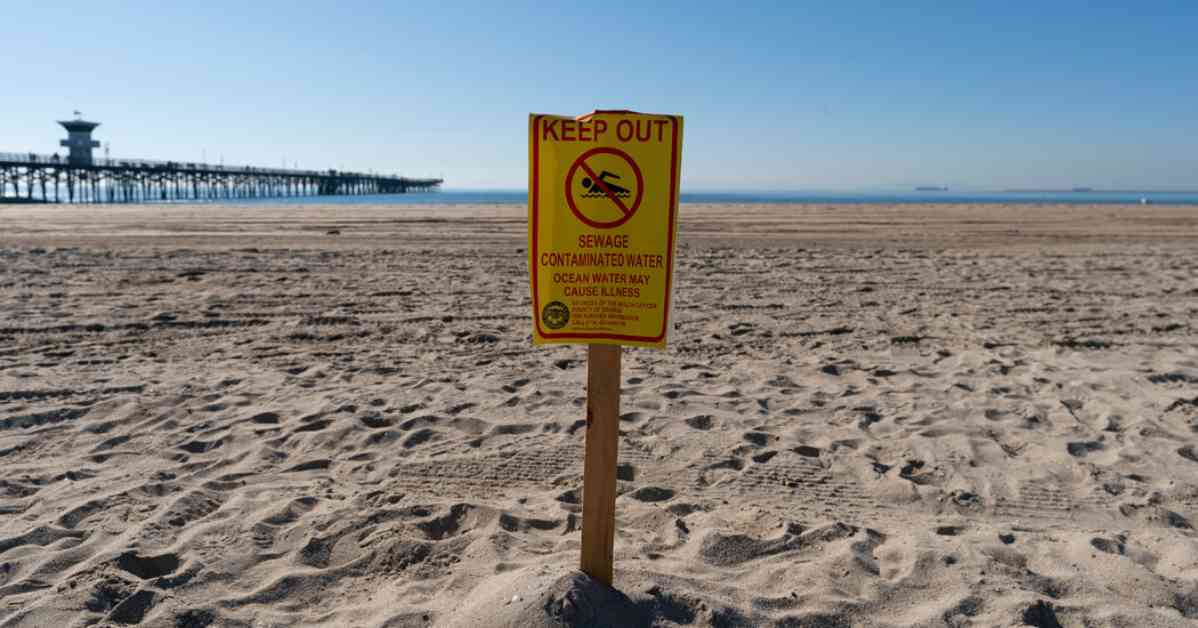An estimated 15,000 gallons of sewage spilled into a creek near Venice and Dockweiler State beaches on Saturday, officials said, causing them to be shut down. A beach closure sign in Seal Beach, Calif., in January 2022 after a raw sewage spill in the Dominguez Channel.Credit…Jae C. Hong/Associated PressJuly 23, 2024Updated 7:26 a.m. ETTwo Los Angeles-area beaches have been shut down for more than 48 hours — amid an intense heat wave across parts of California — not because of sharks or lack of lifeguards, but because several thousand gallons of untreated sewage have spilled into a nearby creek, stinking up summer plans for beachgoers, officials said.An estimated 15,000 gallons of sewage was discharged on Saturday afternoon in a neighborhood roughly seven miles east of the Santa Monica Pier, entering the Ballona Creek, the Los Angeles County Department of Public Health said in a news release.“The cause of the sewage discharge was a broken water main that pushed sand into the sewer, causing the blockage,” the agency said.Parts of Dockweiler State Beach and Venice Beach remained closed, halting any swimming, surfing, and playing in ocean waters.
The public health department did not immediately respond to a request for comment on Tuesday morning, including details on testing and cleanup practices.“Water contact may cause someone to become ill,” officials said in a detailed description of the closures. “When a beach is closed, the Department of Public Health advises beach users to avoid all contact with ocean water in the closure area and where closure signs are posted.”It was unclear when the beaches would reopen, but temperatures in parts of Southern California this week were expected to be hot, reaching into the lower 100s. More than 9.5 million people from Southern California to Montana were also under an excessive heat warning, according to the National Weather Service. For some locations, the intense heat was expected to remain at least through Thursday.Sewage spills that upend beach plans in Los Angeles are not uncommon. More than 14,000 gallons of sewage spilled into the same creek in May, also causing beaches to temporarily close.There have been other, much larger, sewage spills in Los Angeles, including one in late 2021 when about 8.5 million gallons of untreated sewage spilled into a flood-control waterway. That spill, which was caused by a collapsed concrete pipe, forced at least five beaches to temporarily close.
Besides causing beach closures and health risks, sewage spills can have detrimental effects on marine life and ecosystems. The discharge of untreated sewage can introduce harmful pathogens and pollutants into the water, impacting the health of aquatic organisms and disrupting the balance of marine ecosystems. Additionally, the presence of high levels of sewage in coastal waters can lead to algal blooms and oxygen depletion, further harming marine life.
To prevent sewage spills and protect coastal environments, it is crucial for local authorities to invest in the maintenance and upgrading of sewage infrastructure. Regular inspections, repairs, and improvements to sewer systems can help prevent blockages and leaks that lead to spills. Furthermore, public awareness and education about proper waste disposal practices can also contribute to reducing the risk of sewage contamination in water bodies.
In light of the recent sewage spill in Los Angeles, beachgoers and residents are advised to stay informed about water quality conditions and beach closures in their area. It is essential to follow guidelines from public health authorities and avoid contact with contaminated water to prevent potential health hazards. By taking proactive measures to address sewage spills and promote environmental stewardship, communities can help safeguard the health of their coastal ecosystems and ensure the safety of beach recreational activities.




